| Date | Text | |
|---|---|---|
30 Nov 1919

Andrew Douglass |
Andrew Douglass (biology) Andrew Douglass proposes dendrochronology dating. |
|
30 Nov 1919
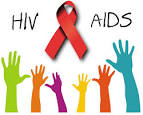
HIV |
HIV (biology) The HIV pandemic almost certainly originates in Léopoldville, modern-day Kinshasa, the capital of the Belgian Congo. |
|
30 Nov 1919

Newcomen Society |
Newcomen Society (history of science a) Newcomen Society founded in the United Kingdom for the study of the history of engineering and technology. |
|
30 Nov 1919
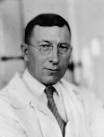
Frederick Banting |
Frederick Banting (medicine) Frederick Banting and Charles Best co-discover insulin. |
|
30 Nov 1919

Hans Gerhard Creutzfeldt |
Hans Gerhard Creutzfeldt (medicine) Hans Gerhard Creutzfeldt first describes some of the symptoms of what will become known as Creutzfeldt–Jakob disease. |
|
30 Nov 1919

Hydrocodone |
Hydrocodone (medicine) Hydrocodone, a narcotic analgesic closely related to codeine, is first synthesized in Germany by Carl Mannich and Helene Löwenheim. |
|
30 Nov 1919
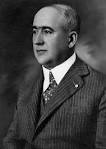
Milutin Milanković |
Milutin Milanković (meteorology) Milutin Milanković proposes that long term climatic cycles may be due to changes in the eccentricity of the Earth's orbit and changes in the Earth's obliquity ("Milankovitch cycles"). |
|
30 Nov 1919
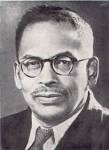
Megh Nad Saha |
Megh Nad Saha (physics) Megh Nad Saha states his ionization equation. |
|
30 Nov 1919
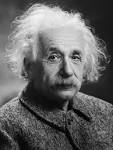
Albert Einstein |
Albert Einstein (physics) Albert Einstein delivers his Leiden Lecture. |
|
30 Nov 1919
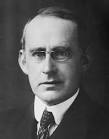
Arthur Eddington |
Arthur Eddington (physics) Publication of Arthur Eddington's observation of the "bending of light" during the total solar eclipse of May 29, 1919, confirming Einstein's theory of general relativity. |
|
30 Nov 1919

Ernest Rutherford |
Ernest Rutherford (physics) Ernest Rutherford predicts the existence of the neutron. |
|
30 Nov 1919

James Jeans |
James Jeans (physics) James Jeans discovers that the dynamical constants of motion determine the distribution function for a system of particles. |
|
30 Nov 1919

Alan A. Griffith |
Alan A. Griffith (physics) Publication of Alan A. Griffith's analysis of the process of brittle fracture. |
|
30 Nov 1919
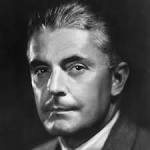
John B. Watson |
John B. Watson (psychology) John B. Watson conducts the Little Albert experiment in classical conditioning. |
|
30 Nov 1919

Prague |
Prague Publication in Prague of Karel Čapek's drama R.U.R: Rossum's Universal Robots, introducing the word Robot to the world. |
|
03 Jan 1920

Zygmunt Janiszewski |
death Zygmunt Janiszewski Zygmunt Janiszewski, Polish mathematician (born 1888). |
|
06 Jan 1920

Hieronymus Georg Zeuthen |
death Hieronymus Georg Zeuthen Hieronymus Georg Zeuthen, Danish mathematician (born 1839). |
|
20 Jan 1920

John Maynard Smith |
birth John Maynard Smith John Maynard Smith (died 2004), British theoretical evolutionary biologist and geneticist. |
|
07 Feb 1920
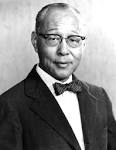
An Wang |
birth An Wang An Wang, Chinese-born computer engineer (died 1990). |
|
11 Mar 1920

Nicolaas Bloembergen |
birth Nicolaas Bloembergen Nicolaas Bloembergen, Dutch physicist, Nobel Prize laureate. |
|
13 Mar 1920

Charles Lapworth |
death Charles Lapworth Died 13 Mar 1920 at age 77 (born 30 Sep 1842). English geologist who proposed what came to be called the Ordovician period (505 to 438 million years old) of geologic strata. Lapworth is famous for his work with marine fossils called graptolites. By fastidiously collecting the tiny, colonial sea creatures, he figured out the original order of layered rocks that had been faulted and folded in England's Southern Uplands. This method of correlating rocks with graptolites became a model for similar research throughout the world. In 1879, Lapworth proposed a new classification of Lower Paleozoic rocks with the Ordovician, between the redefined Cambrian and Silurian periods, Lapworth convincingly settled a heated dispute. The name comes from an ancient Welsh tribe, the Ordovices. |
|
15 Mar 1920

E. Donnall Thomas |
birth E. Donnall Thomas E. Donnall Thomas, American physician, Nobel Prize laureate. |
|
26 Mar 1920

William Chester Minor |
death William Chester Minor William Chester Minor, American surgeon (born 1834). |
|
31 Mar 1920

Paul Bachmann |
death Paul Bachmann Paul Bachmann, German mathematician (born 1837). |
|
03 Apr 1920

Mary Katharine Brandegee |
death Mary Katharine Brandegee Mary Katharine Brandegee, American botanist (born 1844). |
|
06 Apr 1920

Edmond H. Fischer |
birth Edmond H. Fischer Edmond H. Fischer, Swiss American biochemist, Nobel Prize laureate. |
|
08 Apr 1920

John Brashear |
death John Brashear John Brashear, American astronomer (born 1840 in science). |
|
09 Apr 1920
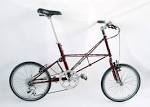
Alex Moulton |
birth Alex Moulton Alex Moulton, English mechanical engineer and inventor (died 2012) |
|
09 Apr 1920
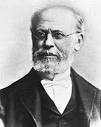
Moritz Cantor |
death Moritz Cantor Moritz Cantor, German historian of mathematics (born 1829). |
|
26 Apr 1920

Srinivasa Ramanujan |
death Srinivasa Ramanujan Srinivasa Ramanujan, Indian mathematician (born 1887). |
|
10 May 1920

John Wesley Hyatt |
death John Wesley Hyatt Died 10 May 1920 at age 82 (born 28 Nov 1837). American inventor and manufacturer who was a pioneer of the plastics industry. He discovered the process for making celluloid. His other inventions included a water-purification system, a sugar-cane mill, a machine for straightening steel rods, a multi-stitch sewing-machine, and a widely used roller bearing. In the 1860s he became interested in finding a substitute for the ivory used to make billiard balls. With his brother Isaac, he improved the techniques of molding pyroxylin (a partially nitrated cellulose) with camphor by dissolving in an alcohol and ether mixture to make it softer and more malleable. This he called "Celluloid," a name trademarked on 14 Jan 1873. It was the first synthetic plastic, for which he took out a patent in 1870. Later in life he had over 200 patents. |
|
17 Jun 1920

François Jacob |
birth François Jacob François Jacob, French biologist, Nobel Prize laureate. |
|
22 Jun 1920

James H. Pomerene |
birth James H. Pomerene Born 22 Jun 1920; died 7 Dec 2008 at age 88. James Herbert Pomerene was an American computer designer who, inApr 1946, joined John von Neumann and Herman Goldstine in their newly organized Electronic Computer Project at the Institute for Advanced Study in Princeton, New Jersey. This project was to build a parallel stored-program computer. He designed the adder portion of the arithmetic unit and then was entirely responsible for the development and construction of the electrostatic (Williams tube) memory and became the chief engineer of the project 1951-56. Then he joined IBM to assist development of the HARVEST computer, a special system built for the National Security Agency. It had two levels of program control and also had a tape and tape library system that was fully automatic and of great capacity. |
|
03 Jul 1920

William Crawford Gorgas |
death William Crawford Gorgas Died 3 Jul 1920 at age 65 (born 3 Oct 1854). Major William Crawford Gorgas was a U.S. Army surgeon who contributed greatly to the building of the Panama Canal by introducing mosquito control to prevent yellow fever and malaria. Originally, Gorgas doubted the conclusion of Walter Reed's Yellow Fever Commission in Cuba (1900) that the mosquito was the only means by which the disease spread. Nevertheless, Gorgas supported the new policy and eventually became the most active proponent of the mosquito theory in the United States. In Cuba, he assisted in eliminating mosquito breeding grounds. In 1904, Gorgas led the ten-year anti-mosquito campaign to wipe out yellow fever in Panama. |
|
07 Jul 1920

Radio compass |
Radio compass In 1920, a device known as the radio compass was used for the first time on a U.S. Navy airplane near Norfolk, Virginia on this day. |
|
10 Jul 1920
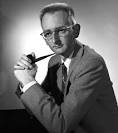
Owen Chamberlain |
birth Owen Chamberlain Owen Chamberlain, American physicist, Nobel Prize laureate (died 2006). |
|
11 Jul 1920

David Challinor |
birth David Challinor David Challinor (died 2008), American biologist, naturalist, and scientific administrator at the Smithsonian Institution. |
|
25 Jul 1920

radio |
radio (technology) The first transatlantic two-way radio broadcast is made. |
|
25 Jul 1920

Rosalind Franklin |
birth Rosalind Franklin Rosalind Franklin, English crystallographer (died 1958). |
|
29 Jul 1920

Airmail |
Airmail In 1920, the first transcontinental airmail flight relay from New York to San Francisco occurred. A quote from the event, "I happened to be the man on the spot, but any of the rest of the fellows would have done what I did, " said Jack Knight, first night mail flight, which was part of a record-setting transcontinental airmail relay. Interstate carriage of mail by airplane was sanctioned between Garden City and Mineola, NY with Earle H. Ovington, first U. S. mail pilot (1911). This was a dangerous occupation: 31 of the first 40 pilots hired to fly mail were killed in crashes. Regular transcontinental airmail service began in 1924. |
|
10 Aug 1920

Ádám Politzer |
death Ádám Politzer Ádám Politzer (born 1835), Hungarian otologist. |
|
12 Aug 1920

Hermann Struve |
death Hermann Struve Hermann Struve, Russian-born astronomer (born 1854). |
|
16 Aug 1920
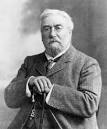
Norman Lockyer |
death Norman Lockyer Norman Lockyer, English astronomer (born 1836). |
|
31 Aug 1920

Wilhelm Wundt |
death Wilhelm Wundt Wilhelm Wundt, German physiologist and psychologist (born 1832). |
|
29 Sep 1920

United States |
United States (technology) First domestic radio sets come to stores in the United States – a Westinghouse radio costs $10. |
|
29 Sep 1920

Peter D. Mitchell |
birth Peter D. Mitchell Peter D. Mitchell, English chemist, Nobel Prize laureate (died 1992). |
|
01 Oct 1920

Russian |
Russian (technology) Young Russian physicist Lev Sergeyevich Termen first develops the electronic musical instrument which will become the Theremin. |
|
17 Oct 1920

Reginald Farrer |
death Reginald Farrer Reginald Farrer, English botanist (born 1880). |
|
29 Oct 1920

Baruj Benacerraf |
birth Baruj Benacerraf Baruj Benacerraf, Venezuelan immunologist, Nobel Prize laureate. (died 2011) |
|
04 Nov 1920

Ludwig Struve |
death Ludwig Struve Ludwig Struve, Russian astronomer (born 1858). |
|
03 Dec 1920

William de Wiveleslie Abney |
death William de Wiveleslie Abney William de Wiveleslie Abney, English astronomer and photographer (born 1843). |
|
05 Dec 1920

Benjamin Holt |
death Benjamin Holt Died 5 Dec 1920 at age 71 (born 1 Jan 1849). American inventor of the crawler track (1904) in the form of an endless chain tread for his steam traction engine. The Caterpillar name resulted when a man photographing one of Holt's track-laying vehicles viewed the motion of the track as it travelled and said it reminded him of a caterpillar. Holt liked it as a nickname, and began using the name for his crawler track. Some years later, when his company merged with another manufacturer, Caterpillar was first used in the company name. |
|
06 Dec 1920

George Porter |
birth George Porter George Porter, English chemist, Nobel Prize laureate (died 2002). |
|
13 Dec 1920
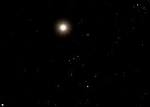
Betelgeuse |
Betelgeuse (astronomy) The red giant star Betelgeuse is the first to have its diameter determined by an optical astronomical interferometer, the Michelson stellar interferometer on Mount Wilson Observatory's reflector telescope. |